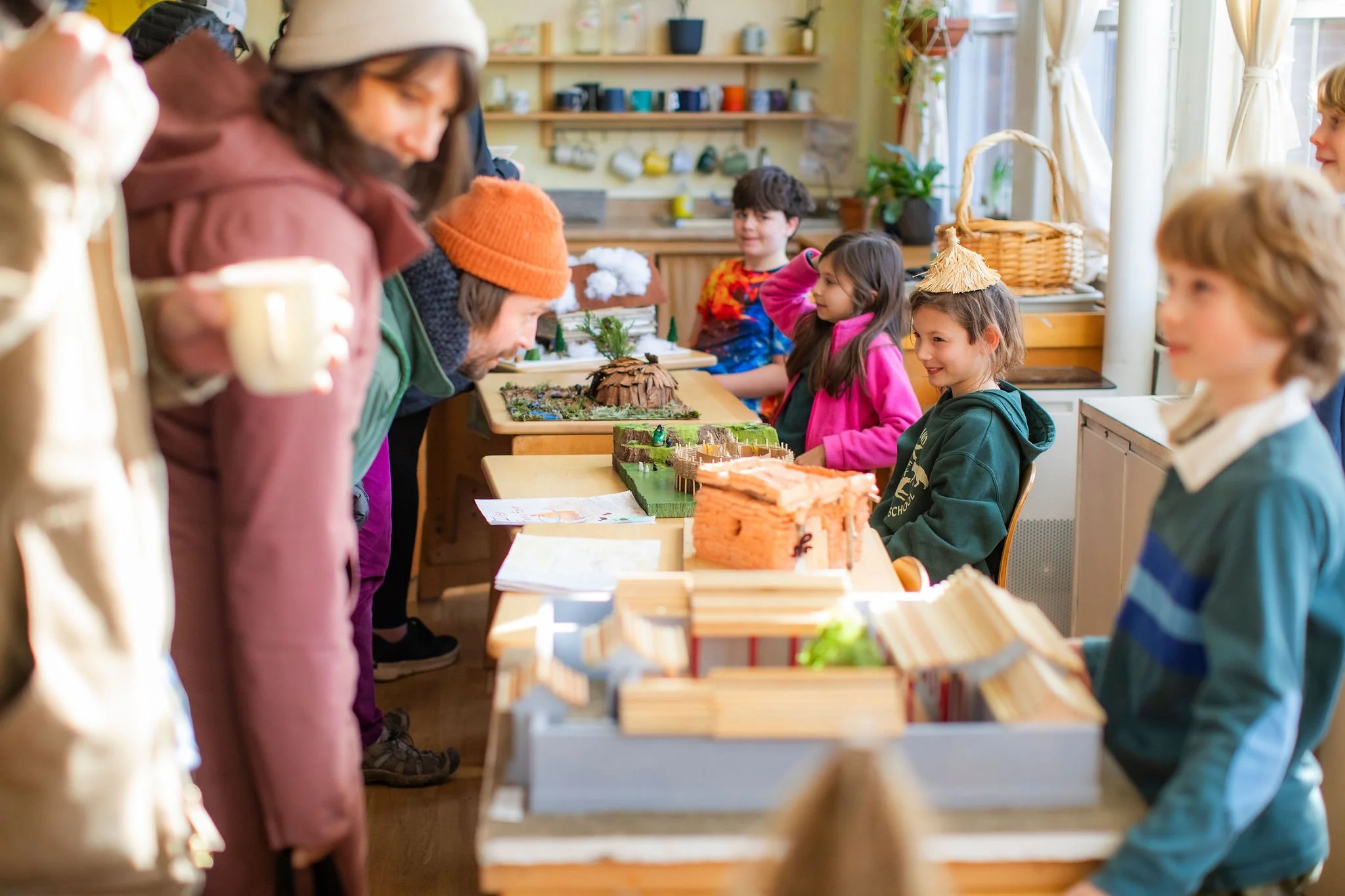
What is Waldorf?

Waldorf education is rooted in the spiritual and developmental philosophy of Rudolf Steiner’s Anthroposophy, which emphasizes the profound inter-connectedness of human beings with both the natural world and the spiritual realm.
At its heart is a vision of education that is attuned to the evolving needs of the child—flexible, responsive, and deeply human-centered. Steiner called for an approach that met young people where they were, in the present moment, encouraging educators to create living learning environments that nurture the whole child and reflect the changing times in which they live.
Modern Science Validates Waldorf Education's Century-Old Philosophy
Contemporary scientific research is now confirming what Waldorf education has practiced for over 100 years. The holistic approach pioneered by Rudolf Steiner emphasizes the integration of intellectual, practical, and artistic elements that modern neuroscience now recognizes as optimal for comprehensive brain development. Waldorf's long-standing practices of movement integration, arts-based learning, and age-appropriate curriculum introduction are increasingly supported by current research in cognitive development, demonstrating that this educational philosophy was remarkably ahead of its time.
A Brief History
The first Waldorf school opened in 1919 in Stuttgart, Germany, established for the children of workers at the Waldorf-Astoria Cigarette Factory. This origin speaks to the movement’s socially conscious working-class foundations—an aspect often overlooked. While Waldorf education has come to be associated with a certain artistic and holistic ethos, its beginnings were grounded in the values of equity, accessibility, and human dignity.
Today, Waldorf schools span the globe, each one carrying forward this vision. In Europe, Waldorf education is widely supported by public funding, and in recent years, the movement has seen significant growth in China, where its emphasis on creativity, moral development, and whole-child education has found growing resonance.
“Waldorf education has its foundations in anthroposophy. At the heart of anthroposophy is the belief that humanity has the wisdom to transform itself and the world through one’s own spiritual development. To that end, Waldorf education holds as its primary intention the ideal of bringing forth—in every child—his or her unique potential in a way that serves the further development of humanity. The curriculum, pedagogy, and teaching methods are designed to nurture this potential.”
— AWSNA Website

ESSENTIAL WALDORF PRINCIPLES
-
EDUCATION IN HARMONY WITH CHILD DEVELOPMENT
Developmentally appropriate curriculum focuses on introducing subjects when a child is developmentally ready to receive them, rather than adhering to standardized timelines. This approach recognizes that children develop at different rates and have unique learning windows where they can most effectively absorb and integrate new knowledge. By aligning education with natural developmental stages, children form deeper connections with the material, resulting in more meaningful comprehension and retention. This method honors the individual child's growth process, creating a foundation where learning becomes organic rather than forced.
-
INTEGRATED ARTS AND PRACTICAL LIFE SKILLS
The integration of arts, music, drama, and practical skills like woodworking and gardening serves as essential curriculum components rather than supplementary activities. This multifaceted approach addresses Howard Gardner's theory of multiple intelligences, ensuring that regardless of a child's learning style—whether visual, auditory, kinesthetic, or otherwise—there exists a pathway for them to engage with and internalize knowledge. By incorporating diverse learning modalities, education becomes accessible and meaningful to every student.
-
ARTS AS A TOOL FOR INNER DEVELOPMENT AND COGNITIVE GROWTH
In Waldorf education, artistic activities serve purposes beyond creating displayable work or entertainment. Art-making functions as a powerful tool for building inner strength, developing willpower, and establishing emotional balance. The process of artistic creation constructs new neural pathways, enhancing cognitive function and mental flexibility.
Recent scientific research, as highlighted in books like Your Brain on Art, provides empirical evidence for what Waldorf education has maintained for generations: artistic engagement creates deeper, more meaningful learning experiences while contributing significantly to cognitive development and our overall well-being.
-
NARRATIVE AS EDUCATIONAL FOUNDATION
Storytelling forms a cornerstone of Waldorf pedagogy, with teachers employing narratives to convey concepts across diverse subjects including history, science, and mathematics. This approach nurtures imagination while helping children internalize knowledge through meaningful context. The curriculum thoughtfully progresses from fairy tales in early childhood—introducing universal archetypes and human experiences—to more complex literature as students grow in age.
Middle school years focus on stories that develop moral reasoning, while high school students engage with epic narratives like The Odyssey and Parzival that explore themes of resilience and personal growth—essential preparation for navigating adult challenges.
-
STRONG TEACHER-STUDENT RELATIONSHIPS
The Waldorf model often features a class teacher who remains with the same group of students for several years, creating continuity and deep interpersonal connections. This extended relationship allows teachers to develop comprehensive understanding of each child's learning style, strengths, challenges, and unique personality. The resulting trust and familiarity create a secure learning environment where students feel seen and supported. This approach enables more personalized instruction and fosters a community atmosphere where genuine growth can flourish, as teachers witness and guide their students' development through multiple developmental stages.
-
CONNECTION WITH NATURE AND COMMUNITY
Nature is the best teacher. Waldorf education deliberately weaves outdoor activities, nature exploration, and environmental awareness throughout its curriculum. Regular nature walks, gardening projects, and outdoor lessons connect children directly with the natural world, fostering appreciation for environmental systems and natural beauty. This connection with nature extends to broader community engagement and sustainable living practices. By experiencing firsthand the rhythms and processes of the natural world, students develop ecological consciousness and a sense of responsibility toward their environment. This immersive approach helps children understand their place within both natural systems and human communities, nurturing future environmental stewards.
Why Waldorf Now
Whether you are new to Waldorf education and looking to learn more, or a long-time Waldorf family looking to understand more deeply the “whys” of Waldorf education, we’ve compiled resources below on everything from media to brain science.

Further Reading
For a wealth of information about Waldorf education, Rudolf Steiner, and anthroposophy, be sure to visit the website for the Association of Waldorf Schools of North America (AWSNA). For information specific to early childhood education, visit the website for Waldorf Early Childhood Association of North America (WECAN). You can also read books for free online at the Online Waldorf Library.


